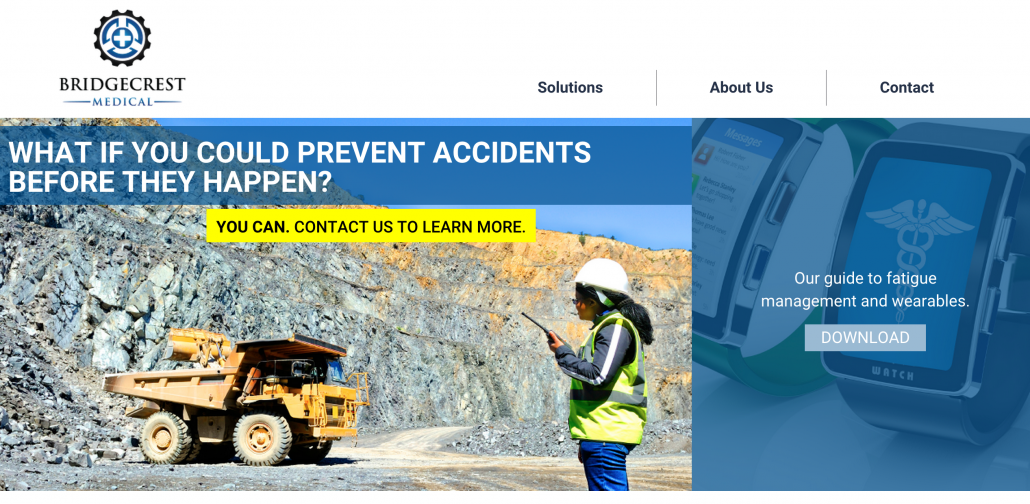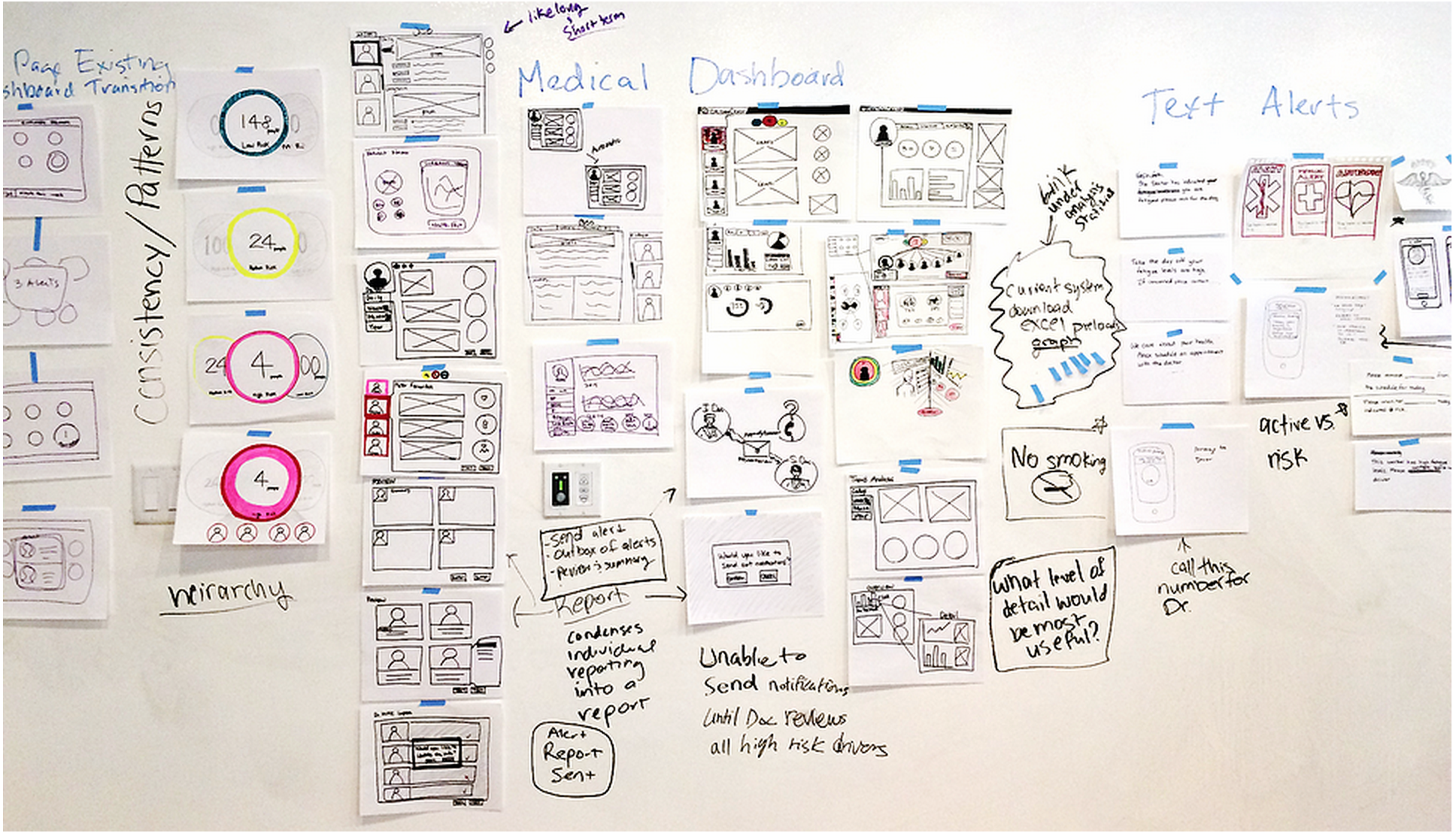Designing Real-Time Tools to Improve Mine Safety
How might we structure real-time data from wearable devices to prevent accidents before they happen?

Bridgecrest Medical integrates the latest mobile and wearable technology with real-time data analytics to help companies prevent accidents, reduce insurance costs and improve productivity.
Over the course of about six months in 2014-2015, I focused on three specific challenges:
- creating an initial concept for an employee wellness portal
- designing an interface to manage worker fatigue in real time
- relaunching the company’s website
Bridgecrest Medical Fatigue Management Solution from Bridgecrest Medical on Vimeo. I served as the main point of contact with Piehole.TV throughout the video production process, including the Spanish translation.
Challenge #1: How might an employee portal engage workers in safer and healthier behavior?
Brenda Chen and I designed an initial concept to give employees access to their health data. This project stemmed from a request from one of Bridgecrest’s clients, a multinational mining company.
This company collects employee health data through monthly screenings and wearable devices. We explored how Bridgecrest’s system might filter and display the data to meet the needs of two audiences: executives and mine workers. Our research consisted of extensive reading about mining safety, gamification and employee wellness, along with interviews with local construction workers.
Challenge #2: How might we structure real-time data from wearable devices to prevent accidents before they happen?
For this project, I led a team of four user experience designers. This time, the scope of the project was more tightly defined.
A significant percentage of workplace accidents are fatigue-related. And too many are fatal. Mining companies, especially those in high-altitude locations where workers live on site while on shift, have expressed interest in having their employees use wearable devices to track their sleep patterns.
How might this system work?
How might we filter the enormous amount of data that wearables generate into a system that meets the needs of this time-sensitive, 24/7 industry?
The team interviewed key stakeholders, including a company doctor from Peru and a consultant who had designed many products for the mining industry industry in Australia. Together we sketched a wide range of design options, created journey maps, and figured out how to manage scrolling and alerts within the desktop and mobile interfaces.
A glimpse behind the scenes at our design studio process:

Here’s what two of the designers wrote about the experience:

Challenge #3: How might we communicate the core value of this complex technology in a new website?
BEFORE: The text was hard to read, the hierarchy and structure didn’t help new visitors understand the core value, and the company had refined its positioning strategy—so it was time to build an all-new site.

AFTER: The page structure emphasizes the core product offering: fatigue management solutions, while clearly differentiating the three product lines. The colors and style emphasize that the company’s core values of innovation and strength.
I created the structure for the new site, wrote all of the core content, and managed a global team of contractors — including two graphic designers, a WordPress developer, and a video production company.

For a series of infographics like these, I wrote the copy and sketched out a rough draft, then collaborated with a visual designer to refine its look.

CONTENT STRATEGY:
To educate prospects about how wearables and real-time data can prevent accidents, I authored a 20-page guide on the topic (a content pillar, the base of a broader marketing campaign, inspired by this strategy from content marketing software provider Kapost. The idea is to conduct all of the core research and interviews upfront, then repurpose the main ideas in many forms—articles, infographics, etc.—to reach many different audiences.)
Here’s a preview of what’s inside:
This guide served as the base for these bylined articles on LinkedIn and in RTInsights. Here’s an excerpt from my RTInsights piece:
When people don’t sleep enough, they can make mistakes and fail to pay attention during routine tasks. They can even fall asleep on the job. Some of the most disastrous workplace events—from the nuclear disaster at Chernobyl to the recent case of an Alaska Airlines baggage handler getting trapped in a plane’s cargo hold—have been attributed to fatigue. This is especially problematic in industries that depend on round-the-clock shifts such as healthcare, mining and transportation.
How might we prevent accidents before they happen? A new set of solutions lies at the intersection between wearables (wearable technology) and real-time analytics.
